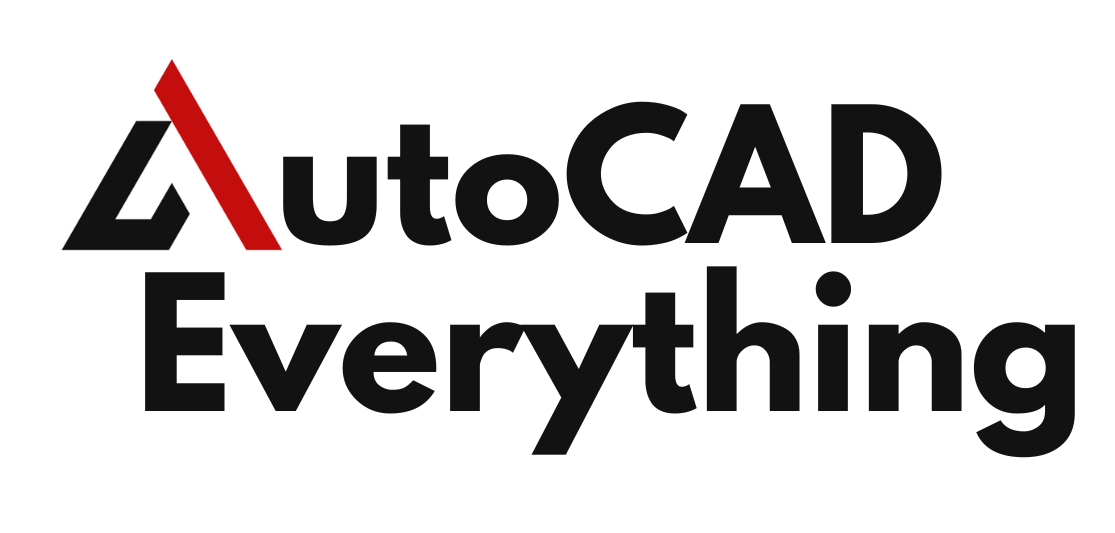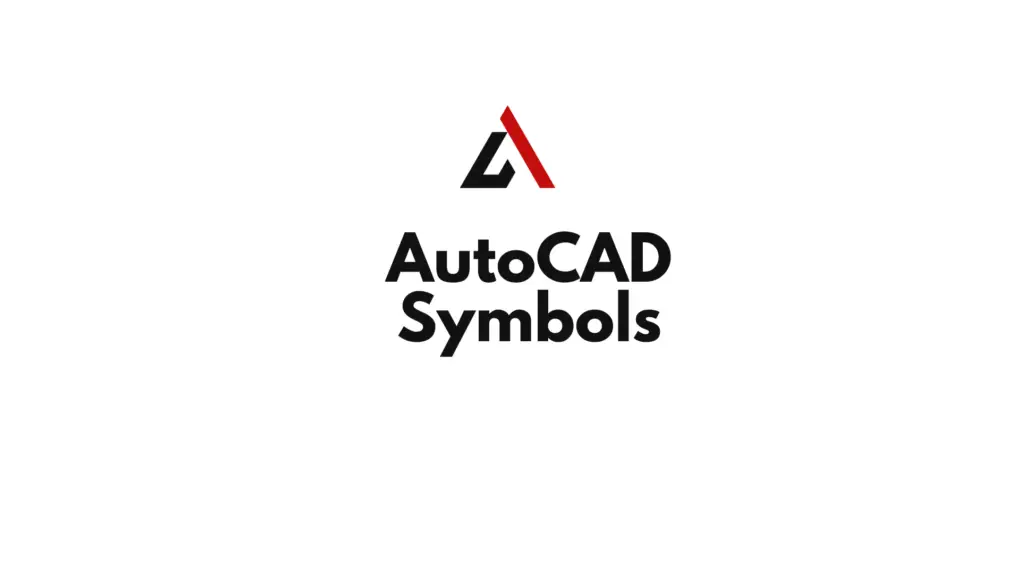Introduction
AutoCAD symbols play a crucial role in communicating design elements and construction details in architectural drawings. In AutoCAD, these symbols serve as standardized visual representations of objects, materials, and elements like doors, windows, electrical outlets, and fixtures. Whether you’re working on a floor plan, elevation, or section drawing, knowing how to use and create architectural symbols can significantly enhance your workflow and the clarity of your designs. This article provides an overview of standard architectural symbols used in AutoCAD and how to create, use, and manage them effectively.
Table of Contents
What Are Architectural Symbols in AutoCAD?
Architectural symbols in AutoCAD are visual shorthand used to represent common building components, materials, and systems in 2D architectural drawings. These symbols simplify the design process by providing a consistent way to communicate design intent without the need for lengthy explanations.
Some common architectural symbols include:
- Doors and Windows: Representations of different types of doors and windows in floor plans and elevations.
- Electrical Symbols: Symbols for outlets, switches, and lighting fixtures.
- Plumbing Fixtures: Standard symbols for sinks, toilets, showers, and other fixtures.
- Furniture and Equipment: Symbols for beds, desks, chairs, and other interior elements.
- Structural Elements: Symbols representing walls, columns, and beams.

Why Are Standard Architectural Symbols Important?
Using standard architectural symbols ensures consistency, clarity, and efficiency across architectural drawings. These symbols make it easier for architects, engineers, contractors, and clients to understand and interpret the design. Because the symbols are universally recognized, they reduce ambiguity and speed up the drafting process.
Common Architectural AutoCAD Symbols
Doors and Windows
- Doors: Door symbols typically depict the opening direction and swing. Single, double, and sliding doors are common variants. In a floor plan, a door symbol usually consists of an arc (showing the swing) and a line (representing the door itself).
- Example Symbol: A standard door symbol shows the door as a line extending from a wall, with an arc representing the door’s swing.
- Windows: Window symbols represent different types of windows such as casement, sliding, and fixed. These are typically shown as lines in a wall opening, with additional lines or hatches to indicate the type of window.
- Example Symbol: A casement window is shown with two parallel lines across the wall with small diagonal lines indicating the direction of opening.
Electrical Symbols
- Outlets: Electrical outlets are depicted as small circles or squares with letters (e.g., “O” for outlet) to indicate the type.
- Example Symbol: A standard power outlet is represented by a small circle with two parallel lines inside it.
- Switches: Switches are shown as small “S” symbols connected to the wall. Toggle switches, dimmers, and three-way switches each have slightly different symbols.
- Example Symbol: A toggle switch is represented by a small “S” shape connected to a wall line.
- Lighting: Lighting fixtures, such as ceiling lights, fans, or recessed lighting, are depicted with symbols like circles or squares combined with specific notations.
- Example Symbol: A recessed light symbol is a circle with an “R” inside it.
Plumbing Symbols
- Sinks and Faucets: A simple rectangle with a circle inside typically represents a sink. Faucets are shown as smaller lines connected to the sink symbol.
- Example Symbol: A bathroom sink symbol consists of a rectangle for the sink basin and two small lines for hot and cold water faucets.
- Toilets and Showers: A toilet is shown as a stylized “T” shape, while showers are often depicted as circles with diagonal lines indicating water spray.
- Example Symbol: A standard toilet is represented by a stylized oval with a short tail to indicate the toilet’s seat and tank.
Furniture and Fixtures
- Beds, Desks, and Tables: Beds are shown as rectangles with pillows, desks as rectangles or squares, and tables as circles or squares with chairs depicted as small rectangles around them.
- Example Symbol: A single bed symbol is a rectangle with two smaller rectangles at one end to represent pillows.
- Cabinetry: Cabinets and countertops are shown as continuous lines with labels or hatches indicating material or storage space.
- Example Symbol: A kitchen cabinet symbol consists of two parallel lines representing the countertop and cabinets below.
Structural Symbols
- Walls: Exterior and interior walls are shown as parallel lines, with thicker lines for load-bearing walls. Hatching or color coding can indicate material, such as brick or concrete.
- Example Symbol: A standard interior wall is represented by two parallel lines, while a load-bearing wall might include hatching for brick or concrete.
- Columns and Beams: Structural columns are represented as circles or rectangles, while beams are often shown as thick lines with notations indicating material and size.
- Example Symbol: A steel column may be shown as a circle with diagonal hatching, while a wooden beam is represented as a thick line.
Creating and Using Architectural Symbols in AutoCAD
Inserting Pre-Defined Symbols
AutoCAD includes a library of pre-defined symbols (blocks) that can be quickly inserted into your drawing.
- Using the Block Library: Access pre-made architectural symbols by typing
INSERTinto the Command Line or selecting Insert from the Ribbon. Choose from AutoCAD’s built-in block library, which includes standard symbols for doors, windows, electrical outlets, and more. - Customizing Blocks: You can modify or scale these pre-defined symbols to match the specifications of your project. Use the
SCALE,ROTATE, andMIRRORcommands to adjust them as needed.
Creating Custom Architectural Symbols
If you need symbols that are unique to your project, you can create custom symbols using AutoCAD’s drawing tools.
- Drawing the Symbol: Use basic drawing commands (
LINE,CIRCLE,PLINE) to create your custom symbol. Ensure that it’s drawn to the correct scale for the project. - Converting to a Block: Once your symbol is complete, use the
BLOCKcommand to convert it into a reusable block. Blocks are efficient because they reduce file size and allow for easy updates across multiple instances.- Select the elements of the symbol and type
BLOCKin the Command Line. Give your block a descriptive name and specify a base point for insertion.
- Select the elements of the symbol and type
- Saving for Future Use: Save your custom symbols to a block library for future projects. This helps streamline your workflow and ensures consistency across multiple designs.
Using Layers to Organize Symbols
Proper layer management is key to maintaining an organized drawing. Assign each type of symbol (doors, windows, plumbing fixtures) to its own layer for easy visibility control.
- Create Layers for Symbols: Use the
LAYERcommand to create separate layers for architectural symbols. For example, create a “Doors” layer, a “Windows” layer, and an “Electrical Symbols” layer. - Assign Colors to Layers: Assign different colors to each layer to distinguish between various symbol types, making your drawing clearer and easier to interpret.
Best Practices for Using Architectural Symbols in AutoCAD
Keep Symbols to Scale
It’s important to ensure that all architectural symbols are drawn to scale to maintain the accuracy of your drawing.
- Use Real-World Dimensions: When creating custom symbols or inserting pre-defined ones, always verify that they match the actual dimensions of the elements they represent.
- Scaling Blocks: If a block is not the right size, use the
SCALEcommand to adjust it appropriately. Select the block, typeSCALE, and enter the desired scale factor.
Maintain Consistency Across Drawings
Consistency is crucial when using architectural symbols, especially in larger projects that involve multiple drawings or collaboration with other designers.
- Standardize Symbols: Develop a standardized set of symbols for your projects and use them consistently. This improves communication and reduces confusion when collaborating with others.
- Symbol Legends: Include a symbol legend in your drawing that explains each architectural symbol used. This ensures that anyone reading the drawing will understand the meaning of each symbol.
Organize Your Block Library
Over time, you may accumulate a large number of custom symbols. Keeping them organized ensures that you can quickly find the symbols you need for future projects.
- Create Folders for Different Categories: Organize your symbols into folders based on categories like doors, windows, furniture, and electrical symbols. This simplifies retrieval and ensures a more efficient workflow.
- Regularly Update and Review Blocks: Periodically review your block library to ensure that all symbols are up-to-date and relevant to your current design standards.
Suggested – Architectural Floor Plans in AutoCAD
Conclusion
AutoCAD architectural symbols are essential tools for creating clear, professional, and easily understandable architectural drawings. Whether you’re working with standard symbols like doors and windows or creating custom symbols for unique elements, AutoCAD’s block and symbol management features offer the flexibility and precision needed for architectural drafting. By understanding how to use these symbols effectively, you can streamline your workflow and ensure that your designs communicate your intent accurately.
FAQs
- How do I insert architectural symbols in AutoCAD?
You can insert architectural symbols from AutoCAD’s block library by typingINSERTin the Command Line or selecting Insert from the Ribbon. You can also create custom symbols and save them as blocks for future use. - What is the best way to organize architectural symbols in a drawing?
Use layers to organize symbols based on their type (e.g., doors, windows, electrical). Assign different colors to each layer to improve visibility and clarity in the drawing. - Can I create my own architectural symbols in AutoCAD?
Yes, you can create custom architectural symbols using AutoCAD’s drawing tools. Once drawn, you can convert the symbol into a block using theBLOCKcommand. - How do I scale architectural symbols in AutoCAD?
Use theSCALEcommand to adjust the size of any symbol in AutoCAD. Select the symbol, typeSCALE, and input the desired scale factor. - What are some common architectural symbols used in AutoCAD?
Common symbols include doors, windows, electrical outlets, lighting fixtures, plumbing fixtures, and furniture. These symbols are standardized for consistency across architectural drawings.

